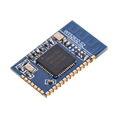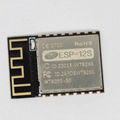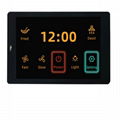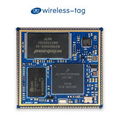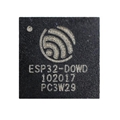1. Overview ESP32-WROOM-32D and ESP32-WROOM-32U are powerful, generic Wi-Fi+BT+BLE MCU modules that target a wide variety of applications, ranging from low-power sensor networks to the most demanding tasks, such as voice encoding, music streaming and MP3 decoding. ESP32-WROOM-32U is different from ESP32-WROOM-32D in that ESP32-WROOM-32U integrates a U.FL connector. For detailed information of the U.FL connector please see Chapter 10. Note that the information in this data sheet is applicable to both modules. Any differences between them will be clearly specified in the course of this document. Table 1 lists the difference between ESP32-WROOM-32D and ESP32-WROOM-32U. Table 1: ESP32-WROOM-32D vs. ESP32-WROOM-32U Module ESP32-WROOM-32D ESP32-WROOM-32U Core ESP32-D0WD ESP32-D0WD SPI flash 32 Mbits, 3.3 V 32 Mbits, 3.3 V Crystal 40 MHz 40 MHz Antenna onboard antenna U.FL connector (which needs to be connected to an external IPEX antenna) Dimensions (Unit: mm) (18.00±0.10) × (25.50±0.10) × (3.10±0.10) (See Figure 6 for details) (18.00±0.10) × (19.20±0.10) × (3.20±0.10) (See Figure 7 for details) Schematics See Figure 3 for details. See Figure 4 for details. At the core of the two modules is the ESP32-D0WD chip that belongs to the ESP32 series* of chips. The chip embedded is designed to be scalable and adaptive. There are two CPU cores that can be individually controlled, and the CPU clock frequency is adjustable from 80 MHz to 240 MHz. The user may also power off the CPU and make use of the low-power co-processor to constantly monitor the peripherals for changes or crossing of thresholds. ESP32 integrates a rich set of peripherals, ranging from capacitive touch sensors, Hall sensors, SD card interface, Ethernet, high-speed SPI, UART, I²S and I²C.


